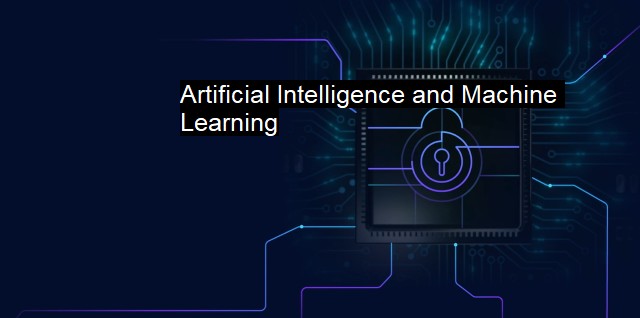What is Artificial Intelligence and Machine Learning?
The Impact of AI and Machine Learning on Cybersecurity: A Comprehensive Introduction
Artificial Intelligence (AI) and Machine Learning (ML) are branches of computer science that focus on empowering computer systems with the capacity to mimic human behavior, learn from experiences, and evolve without explicit programming. Today, these technologies play a pivotal role in cybersecurity and antivirus systems.Artificial Intelligence conceptually revolves around developing computer programs or machines to mimic human intelligence. This encompasses learning, perception, problem-solving, language-understanding, reasoning, and so on. These capabilities allow AI to not only automate repetitive tasks but undertake complex processes and decision-making tasks that were traditionally the domain of human intelligence.
AI brings numerous impactful applications. It can aid in predicting, identifying, and neutralizing threats before they cause damage. Since AI systems can analyze massive datasets much faster than human analysts could possibly, they're particularly valuable for detecting anomalies in real-time, aiding in prompt response and active threat mitigation.
Also, anti-virus software extensively uses Artificial Intelligence. Each file is scanned, and AI aids in comparing these files to known malware. Trends, anomalies, or patterns can pinpoint previously unknown threats. If it acts rather unusually, AI could intervene, taking measures to either alert human operators, delete the threat or quarantine it. Throughout this process, AI streamlines the validation of anomalies and helps human analysts focus on the most crucial tasks that require human intervention.
Machine Learning, an integral part of AI, uses statistical methods to enable machines to improve with increasing data or experiences. It shifts emphasis from hardcoding rules for problem-solving to identifying patterns. As such, ML algorithms learn to respond or act according to precedents, which enriches their strategy for newer challenges over time.
Machine learning plays a significant role in cybersecurity. As new malware changes and invaders get more clandestine, developing programs for each new threat is counterproductive. machine learning algorithms offset this. They're designed to evolve with experience and can identify a diversified range of threats, including those not yet stumbled upon.
With each attempted cyber-attack, machine learning systems can learn from the incident, thereby improving their detection mechanisms and building stronger protective strategies. Meanwhile, in antivirus systems, your machine learning learns from patterns within malware and similar architectures to predict and impede newer threats. This establishes a proactive and self-evolving security stance, rather than a reactive one.
Undoubtedly, the downside of AI is its susceptibility to misuse. AI systems could be manipulated toward harmful endeavors, as seen with 'deepfake' technologies that conjure faked audio, images, or video content. Such instances underline the importance of promoting AI ethics and principles.
Artificial intelligence and machine learning have revolutionized cybersecurity and antivirus protection. By automatically identifying and swiftly reacting to threats, they diminish the burden on human cybersecurity workers and drastically reduce the turnaround time on threat neutralization. By continually learning from the threats they encounter, AI and ML systems are creating a more proactive and all-encompassing future for digital defense. With continued advancements, they promise growing industrial sophistication and resilience against cyber threats.

Artificial Intelligence and Machine Learning FAQs
What is the difference between artificial intelligence and machine learning?
Artificial intelligence (AI) refers to the ability of machines to mimic human intelligence and perform tasks that typically require human intelligence, such as reasoning, learning, and problem-solving. Machine learning (ML), on the other hand, is a subset of AI that involves training machines to learn from data and make decisions based on that learning. In other words, ML is a method for achieving AI.How can artificial intelligence and machine learning be used in cybersecurity and antivirus?
AI and ML are being used in cybersecurity and antivirus to detect and respond to threats in real-time. For example, antivirus software can use ML to examine files and determine whether they are malicious or not based on patterns and behaviors. Additionally, AI can be used to analyze network traffic and identify anomalies that may indicate a cyber attack.What are some potential risks associated with relying on artificial intelligence and machine learning for cybersecurity and antivirus?
One potential risk of relying on AI and ML for cybersecurity and antivirus is that they can be vulnerable to adversarial attacks, where an attacker can exploit weaknesses in the AI or ML algorithms to evade detection. Additionally, if the AI and ML algorithms are not properly trained or maintained, they can produce false positives or false negatives, which can result in missed threats or unnecessary alerts.What are some of the benefits of using artificial intelligence and machine learning in cybersecurity and antivirus?
The benefits of using AI and ML in cybersecurity and antivirus include improved threat detection and response times, increased accuracy and efficiency, and the ability to process large amounts of data quickly. Additionally, AI and ML can help automate certain tasks, freeing up security professionals to focus on more complex issues.| | A | | | B | | | C | | | D | | | E | | | F | | | G | | | H | | | I | | | J | | | K | | | L | | | M | |
| | N | | | O | | | P | | | Q | | | R | | | S | | | T | | | U | | | V | | | W | | | X | | | Y | | | Z | |
| | 1 | | | 2 | | | 3 | | | 4 | | | 7 | | | 8 | | |||||||